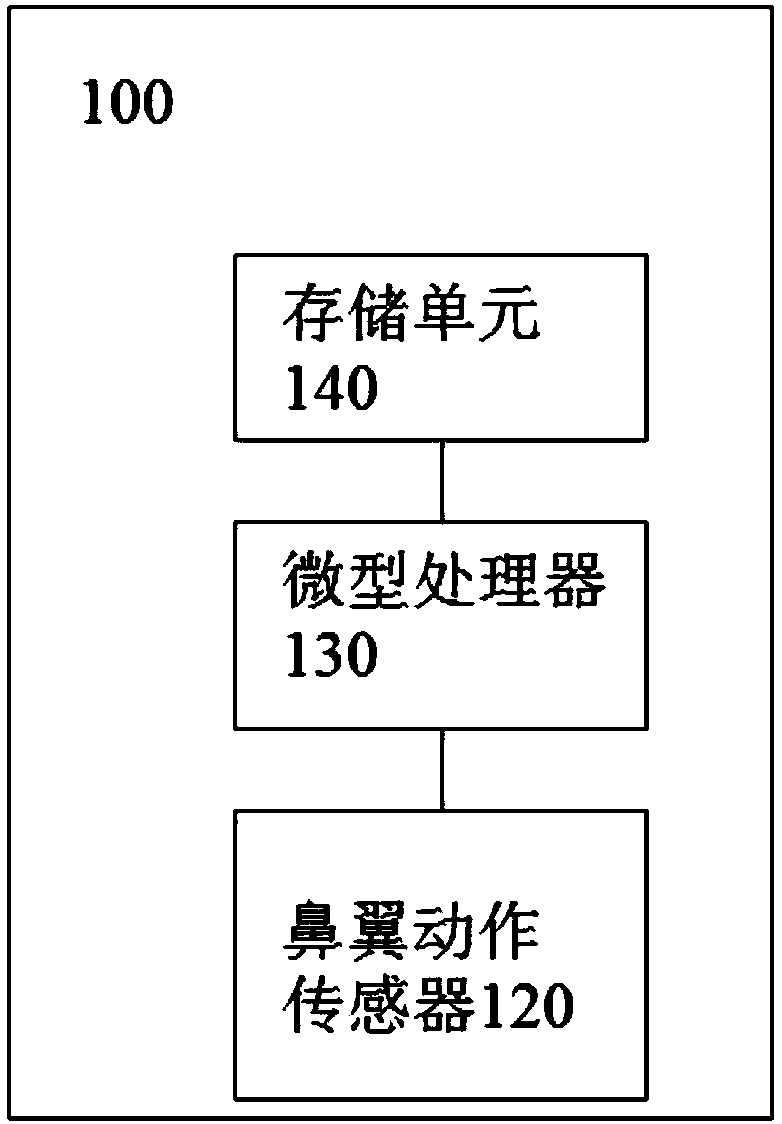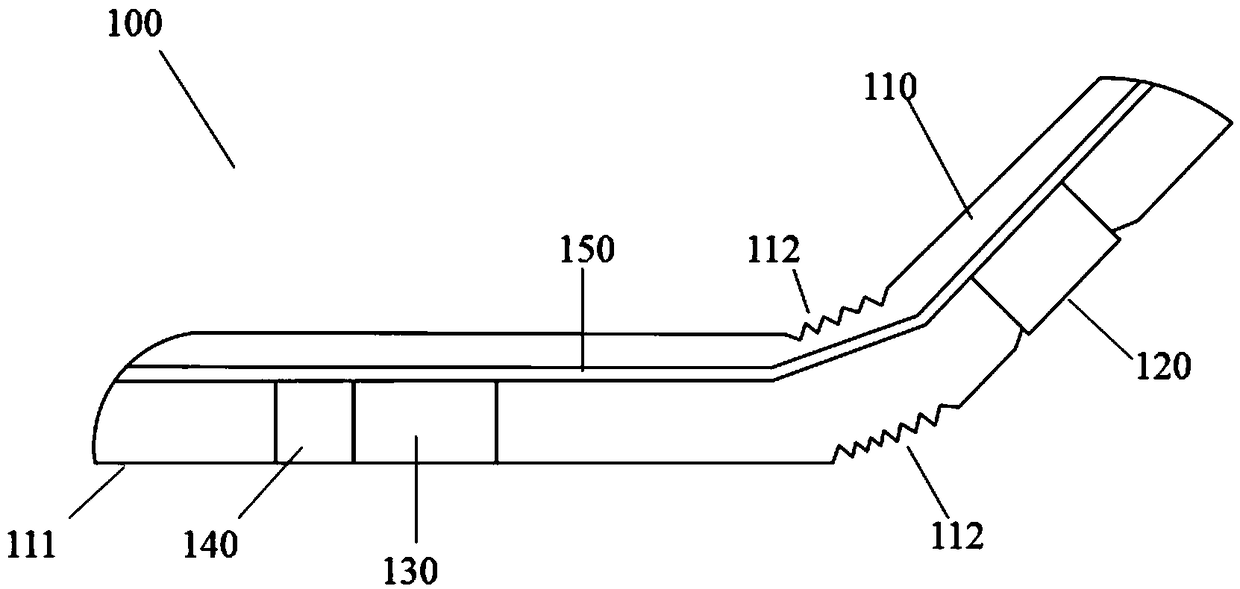Breathing effort identification device and application device thereof
A technology for breathing effort and equipment identification, applied in applications, medical science, sensors, etc., can solve the problems of cumbersome operation, poor wearing comfort, and large volume of polysomnography equipment, and achieve the effect of convenient use and good comfort
- Summary
- Abstract
- Description
- Claims
- Application Information
AI Technical Summary
Problems solved by technology
Method used
Image
Examples
Embodiment 1
[0028] figure 1 , 2 A breathing effort recognition device 100 according to the invention is shown.
[0029] The breathing effort recognition device 100 includes a flexible housing 110 and internal electronics. The base 111 of the flexible shell 110 is a biocompatible and friendly flexible material, and it can be pasted on the subject's skin. The flexible housing 110 has a flexible circuit board 150 and a nose sensor 120 fixed on the flexible circuit board 150 , a microprocessor 130 and a storage unit 140 . The alar motion sensor 120 is used to detect the alar motion signal, and can be any one of an optical sensor, an acceleration sensor, a tension sensor, an electromyographic sensor, and a piezoelectric sensor; if an optical sensor is selected, it includes a transmitting unit and a receiving unit. The microprocessor 130 is electrically connected with the alar movement sensor 120, receives the alar movement signal, analyzes and processes it to identify whether breathing effo...
Embodiment 2
[0037] Figure 4 , 5 , 6 shows a sleep apnea monitoring device 200, Figure 7 shows how it is worn.
[0038]From appearance, the sleep apnea monitoring device 200 includes a flexible shell 210 and an oronasal airflow collection tube 260 . The flexible shell 210 is provided with a bending portion 212, so that the flexible shell 210 can be bent into a shape suitable for the nose, and the base 211 of the flexible shell 210 can be directly attached to the skin of the subject. The oronasal airflow collection tube 260 is provided with a thermistor or a pressure sensor for collecting respiratory signals. The oronasal airflow collection tube 260 can be bent, and the three catheters can be respectively branched to the nostrils and the mouth during use.
[0039] A flexible circuit board 250 is arranged in the flexible shell 210, and the nose wing motion sensor 220, the microprocessor 230 and the storage unit 240 are fixed on the flexible circuit board 250, and the sensor circuit in t...
Embodiment 3
[0046] Figure 8 A schematic flow chart of the sleep apnea monitoring of the present invention is shown.
[0047] A method for monitoring sleep apnea provided by the present invention comprises the following steps:
[0048] The first step is to collect the breathing airflow signal of the mouth and nose and the movement signal of the nose.
[0049] In the second step, it is determined whether an apnea event occurs according to the respiratory airflow signal; if no apnea event occurs, the subsequent steps are not performed.
[0050] The third step is to judge the type of apnea according to the alar movement signal: analyze the alar movement signal within the time period of the apnea event to see if there is nasal breathing effort; if there is an apnea event, analyze the alar movement signal to determine whether there is breathing effort Then this apnea event is identified as obstructive type; analysis of nasal alar movement signal confirms that there is no breathing effort, th...
PUM
 Login to View More
Login to View More Abstract
Description
Claims
Application Information
 Login to View More
Login to View More - R&D Engineer
- R&D Manager
- IP Professional
- Industry Leading Data Capabilities
- Powerful AI technology
- Patent DNA Extraction
Browse by: Latest US Patents, China's latest patents, Technical Efficacy Thesaurus, Application Domain, Technology Topic, Popular Technical Reports.
© 2024 PatSnap. All rights reserved.Legal|Privacy policy|Modern Slavery Act Transparency Statement|Sitemap|About US| Contact US: help@patsnap.com










